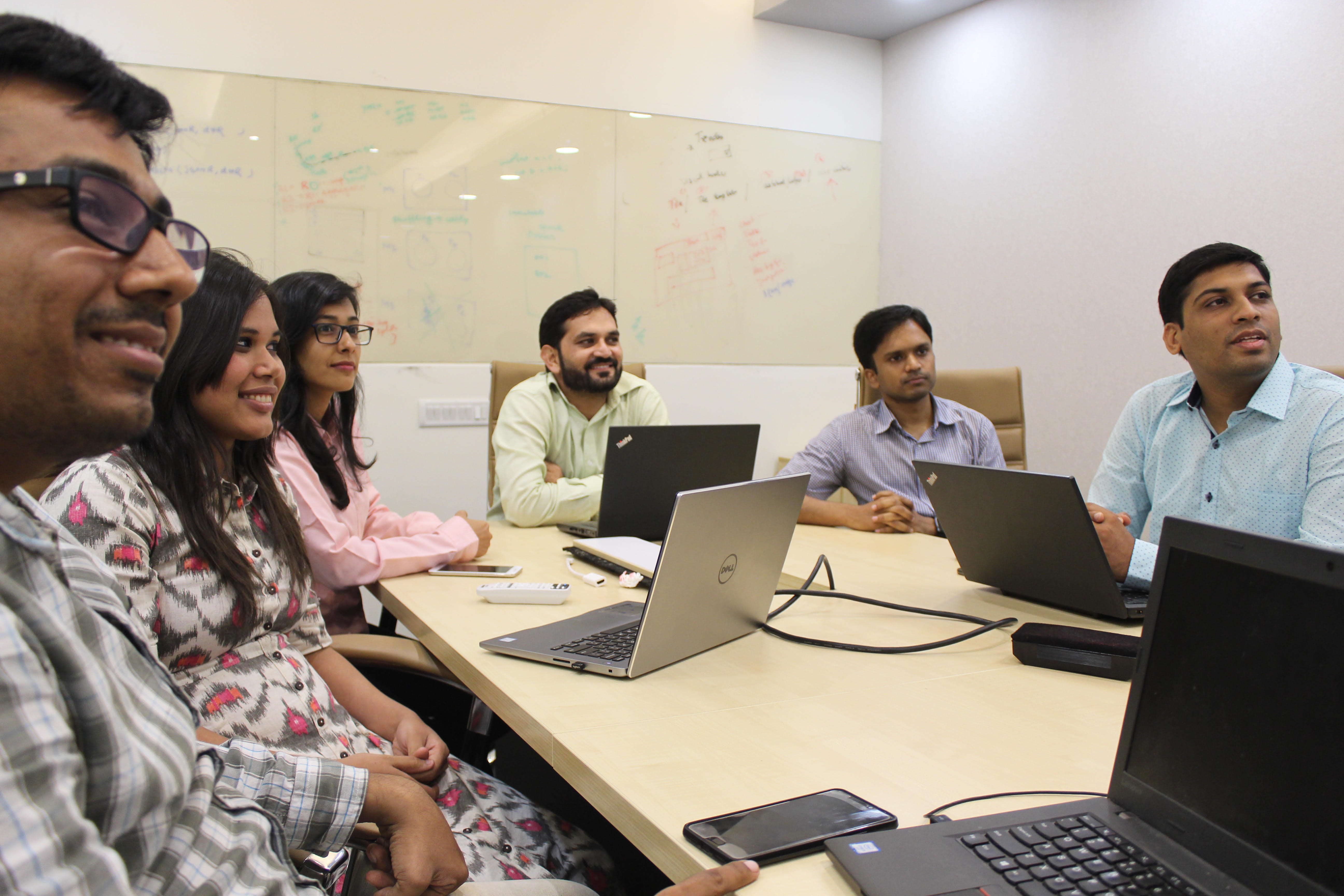Innovation In India: A Snapshot Of Sectors To Watch
This article was first published on Enterprise Singapore on 26 March 2021
The appeal of doing business in India is undeniable. The country has a population of 1.3 billion and a growing middle class.
It also boasts over 700 million Internet users1 thanks to rapid urbanisation.
“But there’s still a massive gap between this and the overall population, therefore representing great opportunity,” said Mr Zaran Bhagwagar, Head, A-Scale, Anthill Ventures at SWITCH 2020, Asia’s largest technology, innovation and enterprise festival.
It was this opportunity that Mr Bagwagar and a host of other industry stalwarts sought to explore at SWITCH 2020, where panellists provided an in-depth look at India’s bright spots for startups and pragmatic advice for aspiring entrants.
There are no short of early movers who have seen the potential in this massive market. India is the world’s third largest startup ecosystem2. It is also home to 21 unicorns, with over 50 “soonicorns” en route to joining the club.
Government-led initiatives have been helpful to young companies hoping to establish a firm footing. For instance, startups can enjoy tax benefits and networking opportunities with Startup India – the country’s startup accelerator under the Ministry of Commerce and Industry; or get access to labs, investors and financial guidance through government-led initiatives.
Urbantech – a growing focus on smart and green cities

One of the most prolific innovation campaigns is the 100 Smart Cities Mission that was launched in mid-2015 by Prime Minister Narendra Modi. A budget of US$14 billion (S$18.5 billion) was set aside to develop 100 smart cities and rejuvenate 500 others.
While COVID-19 has slowed progress, the campaign is still underway. A notable milestone has been the implementation of Integrated Command and Control Centres – to step up surveillance for reducing crime and efficiently deploy emergency services – in 53 cities3.
Beyond that, smart solutions are key to helping urban dwellers live, work and play in a more efficient, innovative and sustainable manner.
In real estate and built environment, cities are looking at how they can reduce energy consumption and improve efficiencies. With increasing concern over environmental sustainability, waste and water management are also top-of-mind, shared Mr Vinamra Srivastava, CEO, India Business Parks, CapitaLand India.
In particular, there has been a push for smart buildings with the establishment of India’s Energy Conservation Building Code4. The code sets out minimum energy performance standards.
Based on a study by Honeywell India5, India’s airports and hotels currently lead the pack in terms of being green, safe and productive for users. Growth opportunities in related solutions and services are anticipated, especially since adopting modern technologies in buildings can potentially save the country billions of dollars each year in energy use4.
Beyond the hardware

Smart city living is also about improving the residents’ quality of life. This includes meeting the academic aspirations of families and ensuring their total well-being.
Consequently, players in the edutech space are now having a heyday. While remote learning had already been on the rise before COVID-19, the pandemic accelerated its disruption to traditional learning formats.
In the first nine months of 2020, funding in edutech jumped four times to US$1.5 billion (S$2 billion) compared to the previous year6. By 2025, India is expected to have over 37 million paid edutech users7 for remote classroom learning, test preparations, online certification and skills development.
Healthtech is yet another booming sector, with an expected market worth pegged at US$485.4 billion (S$641.7 billion) by 20248, up from US$116.6 billion (S$154.2 billion) in 2018. Analysts expect wearable health devices and telemedicine to be significant growth drivers.
E-commerce to reach new heights
The COVID-19 lockdown has driven many retailers and suppliers to move their trade online within India and abroad. The India Brand Equity Foundation estimates that India’s e-commerce market will grow to US$200 billion (S$264.4 billion) by 20269, up from US$38.5 billion (S$50.9 billion) in 2017.
Just ten years ago, e-commerce was a niche area for most brands, said Mr Manish Taneja, Chief Executive Officer and Co-Founder, Purplle.com, a leading online retailer of beauty products.
Mr Taneja pointed to smartphone penetration, the advent of 4G connectivity, logistical improvements and the growing e-commerce talent pool as success factors.
Anyone with Internet connection can make a sale without the need to establish a conventional brick-and-mortar presence. Startups can potentially establish their market presence with cross-border commerce, a boon to operating costs.
Even rural merchants with no online shopfronts are now doing brisk business on mobile chat applications, said Ms Yadav, who predicted that social commerce would grow in tandem with conventional e-commerce.
“There’s been a surge in online-first brands. It is a democratised platform,” quiped Ms Gayatri Yadav, Chief Marketing Officer India & SEA, Sequoia Capital.
Advice from the pros

For all its allure, several panellists reiterated that “India is not for the faint-hearted”, and companies must prepare if they want to succeed. If you’re planning to expand to India, here are some things you should note:
1. Tailor your offerings and marketing messages for each city
The country’s cultural diversity – more than 1,000 languages are spoken on the land – can be daunting. “People should think of India as one continent like Europe rather than a homogenous country,” said Mr Bhagwagar.
2. Start with one city
Different cities have varying needs and consumer preferences. By starting small, you can be clear about the gap you are filling in the market.
3. Go in with a long-term vision of 20 years
Patience is key, echoed the experts, as it takes a few years to learn about the market and build relationships with partners and consumers. The good news is that public agencies are often open to hearing about good ideas and there are various platforms to connect with potential private sector partners, said Mr Srivastava.
4. Have a strong pricing strategy
Be prepared to experience pressure on profit margins in the price-competitive market. One way to address this is to develop a clear and unique value proposition.
How to get started
There is only so much preparation one can do however, as challenges will always present themselves when venturing overseas. “The only way to learn is to get in and get started,” said Ms Yadav.
To smooth the path for internationalisation, you can tap resources such as Enterprise Singapore’s Global Innovation Alliance (GIA) that runs acceleration programmes for companies going abroad.
You can also plug into local innovation ecosystem with the GIA’s networks in Bangalore, Chennai, Mumbai and New Delhi. Through local partners and their guidance, you can navigate the foreign market with confidence.
Ready to make India your next base? Click here for more information on how we can help you get there.
1 “Number of internet users in India from 2015 to 2020 with a forecast until 2025”, Statistica, July 2020.
2 “India 3rd largest startup ecosystem; home to 21 unicorns: Ambassador to US”, Business Today, 6 January 2021.
3 “Year Ender-2020: A report on the ‘Smart City Mission’”, All India Radio News, 24 December 2020.
4 “Smart Building Market: Growth, Trends & Forecasts to 2025”, Research and Markets, January 2020.
5 “India’s Energy Efficiency Initiatives Help Save Over ₹891 Billion in 2018-19: BEE Report”, Mercom India.
6 “Edtech funding jumps 4x to $1.5 billion this year”, The Times of India, 21 September 2020.
7 “The Future of Education: Indian Startups Chase $10 Bn Edtech Opportunity”, Inc42 Plus, 8 October 2020.
8 “Digital healthcare to witness exponential growth in India”, India Brand Equity Foundation, 30 November 2020.
9 ”E-commerce industry in India”, India Brand Equity Foundation, 23 December 2020.

